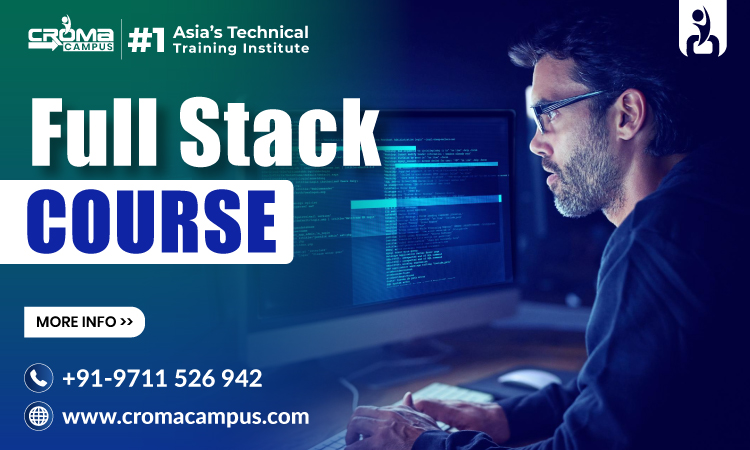As technology evolves, the demand for full-stack developers continues to rise. These versatile professionals are important for building and maintaining dynamic web applications. To stay competitive in 2024, a full-stack developer must be well-versed in a variety of technologies. This blog will explore the essential tools and technologies that every aspiring developer should master, emphasizing the importance of enrolling in a Full Stack Developer Course Online to gain the necessary skills.
Why Full Stack Development Matters?
Full-stack developers wear many hats, handling both the front-end and back-end of web applications. They bring the user interface to life while also managing the server-side logic, ensuring everything works seamlessly together. Their versatility allows them to create a complete user experience, bridging the gap between what users see and what happens behind the scenes.
They must understand user experience design, server-side logic, and database management. The versatility of these developers makes them invaluable in today’s fast-paced tech landscape. By mastering a wide range of technologies, they can contribute significantly to various projects, streamline processes, and enhance user satisfaction.
Technologies for Full Stack Developers in 2024
Technologies for Full Stack Developers
| Technology | Category | Purpose |
| HTML | Front-End | Structure web pages |
| CSS | Front-End | Style web applications |
| JavaScript | Front-End | Add interactivity to web pages |
| React.js | Front-End Framework | Build user interfaces |
| Node.js | Back-End | Create server-side applications |
| Express.js | Back-End Framework | Simplify API development |
| MongoDB | Database | Store data in a flexible format |
| MySQL | Database | Manage structured data |
| Git | Version Control | Track changes in code |
| Docker | DevOps | Containerize applications |
| Kubernetes | DevOps | Manage containerized applications |
- HTML, CSS, and JavaScript
- HTML (Hypertext Markup Language): The foundational building block for creating web pages.
- CSS (Cascading Style Sheets): Responsible for styling web applications, ensuring a visually appealing interface.
- JavaScript: The backbone of interactive elements, allowing developers to create dynamic user experiences.
- Front-End Frameworks
- React.js: A JavaScript library with component-based architecture allows developers to create reusable UI components.
- Vue.js: An approachable framework that simplifies the development of single-page applications, providing flexibility and ease of integration.
- Angular: A powerful front-end framework for building dynamic web applications with a robust architecture and reusable components.
- Back-End Technologies
- Node.js: A JavaScript runtime that enables developers to build server-side applications. It is known for its non-blocking architecture, making it efficient for handling multiple requests.
- Express.js: A web application framework for Node.js, allowing developers to create robust APIs and handle routing easily.
- Database Management Systems
- MongoDB: A NoSQL database that stores data in JSON-like format, offering flexibility and scalability for applications.
- MySQL: A widely used relational database management system known for its reliability and robust performance.
- Version Control and Collaboration
- Git: A version control system that helps developers track changes in their code, collaborate with team members, and manage project workflows.
- GitHub: A platform for hosting Git repositories, enabling developers to showcase their projects and contribute to open-source initiatives.
- DevOps and Deployment
- Docker: A containerization platform that allows developers to package applications and their dependencies, ensuring consistency across environments.
- Kubernetes: An orchestration tool for managing containerized applications, enhancing scalability and reliability.
Investing in Your Future: Online Course
These courses offer a structured curriculum that covers essential technologies and practical skills. They often include hands-on projects, allowing students to apply their knowledge in real-world scenarios. Enrolling in a Full Stack Developer Course Online is a strategic move for aspiring developers.
Understanding Course Fees
While costs can vary based on the institution, the investment often pays off in the long run. When considering enrollment, it’s crucial to evaluate the Full Stack Developer Course Fees. Many online courses provide flexible payment options and financing plans to accommodate different budgets.
Average Course Fees:
| Provider | Average Fee | Duration |
| Online Learning Platforms | ₹15,000 – ₹50,000 | 3 – 6 months |
| Bootcamps | ₹30,000 – ₹1,50,000 | 3 – 6 months |
Understanding Full Stack Developer Course Fees is essential for planning your educational investment. With the right training, you can equip yourself with the knowledge and skills necessary to excel as a full-stack developer and make a significant impact in the tech industry.
Conclusion
In 2024, the toolkit for full-stack developers continues to expand, requiring proficiency in a diverse set of technologies. From foundational languages like HTML, CSS, and JavaScript to advanced frameworks and tools like React.js, Node.js, and Docker, the skill set is extensive. By enrolling in a Full Stack Developer Course, aspiring developers can gain the expertise needed to thrive in this dynamic field.




당시 법무부가 밝힌 징계 사유는 ‘사건 관계인으 통합알분양 로부터 향응수수, 유흥주점 및 모텔 출입 장면이 동영상 촬영되는 등 직무상 의무 위반 및 품위 손상’이다